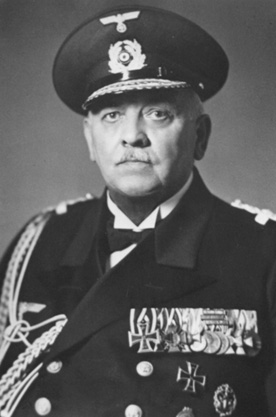|
Markus Bodeux
Article 4 of the
issue document states, that every recipient has the
right to wear a bar on its ribbon, showing the name and
the year of the operation he was participating.
Having the right to do so, means, that the medals were
awarded without those bars in the first place.
Therefore the Bearer of the Colonial Commemorative
Medal could buy their bars.
The information for
which medal they were allowed to wear was clearly
written on the award document. Written was the name of
the operation/Colony and the year. This was a difference
to the documents for the China- and Southwest Africa
commemorative Medal. Those details weren't given on
those documents.
The fact that the Colonial Commemorative Medal was
awarded without their bars, let a lot of recipients to
wear their medal without bars. Looking through pictures
of navy soldier from that time, shows only every 4th
soldier wearing a medal with bars attached to the ribbon
!
On the other hand a lot of recipients were buying bars,
that weren't listed in their award documents and wore
them on their medal bars. As an example for such an
incident find the medal bar of Vice Admirals Max Looff
pictured below. As guard officer on board of S.M.S.
WOERTH during the China war he definitely belonged to
the recipients for the China Commemorative Medal.
Strange however is the attachment of the following three
bars:
| -PEITANG=FORTS |
this operation took place
without any navy involvement. |
| -TAKU |
nobody on board the S.M.S.
WOERTH took part in this operation. |
| -OSTASIEN 1900/01 |
this bar was for the Prussian
Red Cross Medal, only. |
The only explanation
for this happen is that the bars were just taken by the
medal manufacture or von Looff, with or without any
knowledge.
|
Vice Admiral Max
Looff wearing the above pictured medal bar.
Absolutely remarkable is the Life Savings Medal
and the Cross 4th class of the Prussian Order of
the Crown for a second life saving act awarded on
the ribbon of the Life Savings Medal.. |
 |
For which operations the Colonial
Commemorative Medal was awarded to Navy Soldiers
(including Navy Infantry) and which are the matching
bars is clearly stated in the issue document from June
13, 1912 and its additions from February 1914.
A Colonial Commemorative Medal in
steel for "non-combatants" or for "...merit in
collaboration with an operation..." or "honorable" isn't
stated at all. The circle of recipients is therefore
traceable using ranking lists and the "Marineverordnungsblatt",
stating all the changes in Navy personal matters.
The "military operations", which
the Colonial Commemorative Medal was awarded for, are
listed in the issue document and in its additions from
February 17, 1914. All operations counted as "war year"
and "siege" for the participants and were benefiting
towards the social retirement laws.
For Navy soldiers the Colonial
Commemorative Medal was awarded for the following
operations:
- KAMERUN 1884
- KAMERUN 1891
- KAMERUN 1893
- DEUTSCHOSTAFRIKA 1888/89
- DEUTSCHOSTAFRIKA 1889/90
- DEUTSCHOSTAFRIKA 1905/07
- SAMOA 1888
- VENEZUELA 1902/03
- PONAPE 1910/11
The incidents on the coast of
Cameroon in the year 1884 are seen as the first since
the war in 1870/71 having German soldiers in action.
The landing of the ship "Glattdeckskorvette VICTORIA" in
Liberia in 1881, having enemy fire didn't count towards
the right of being awarded with the Colonial
Commemorative Medal, however some Prussian orders for
military merit were awarded (1 Order of the Crown 3rd
class with swords, 1 Red Eagle Order 4th class with
swords, 1 Order of the Crown 4th class with swords, 5
Military-Honor-Medals 2nd class)
Some bars are rather rare. The bar
KAMERUN 1893 could have been awarded to a circle of less
than 200 people (Crew Kanonenboot S.M.S. HYÄNE, crew
Hulk CYCLOP, crew Gouvernementsdampfer NACHTIGAL,
Vermessungsdetachement Kamerun).
Thinking of the fact, that the Colonial Commemorative
Medal was issued 21 years later, February 17, 1914,
makes clear, that the real number of people buying
themselves the bars are much smaller than the number of
theoretical recipients. Besides the meanwhile deceased
people a high percentage of people were already retired.
Therefore they couldn't report to the official offices
of the general orders commission.
This fact explains the extreme rarity for certain bars.
While most of the more recent operations, like
Venezuela, Ponape and Deutschostafrika, were able to be
honored by an award of the Colonial Commemorative Medal
and bar, for most of the other older operations, 20 to
30 years back in time, only a third or even a fourth of
the eligible people might have been able to receive
their medal and bar. These were mostly the higher
ranking officers. An exemption are the NCOs that became
government officials and police officers after their
active duty in the Navy. They were officially know and
received their Colonial Commemorative Medal.
The numbers stated in following articles are reflecting
the amount of soldiers of the German Imperial Navy
having been actively involved in those operations,
having been a member of those crews. The actual number
of awarding can't be given, due to above mentioned
facts.
Read here the follow up article for
the bars:
 Kamerun
1884 Kamerun
1884
 Kamerun
1891 Kamerun
1891
 Kamerun
1893 Kamerun
1893
 Deutschostafrika
1888/89 Deutschostafrika
1888/89
 Deutschosafrika
1905-07 Deutschosafrika
1905-07
| 




